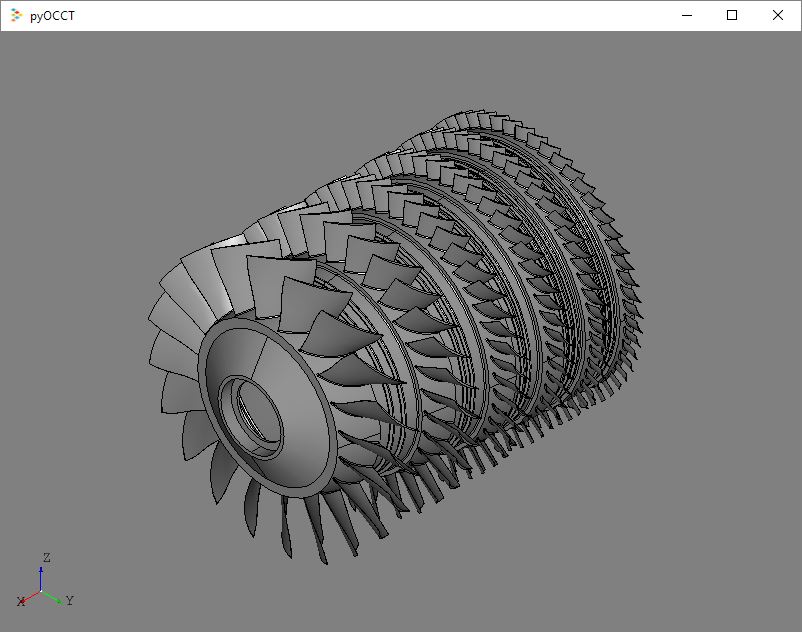The pyOCCT project provides Python bindings to the OpenCASCADE 7.2.0 geometry kernel and SMESH 8.3.0 meshing library via pybind11. Together, this technology stack enables rapid CAD/CAE application development in the popular Python programming language.
Are you a pybind11 expert? If so, check out the Design Considerations documentation and share your thoughts and ideas!
The pyOCCT core technology stack includes:
-
pybind11: This is a lightweight header-only library that exposes C++ types to Python and proved to be a natural fit for the large and complex OpenCASCADE codebase.
-
OpenCASCADE: This mature library provides advanced geometric modeling and CAD functionality and is under active development. Newer versions (i.e., beyond 7.0.0) provide robust and high-performance Boolean operations.
-
Netgen: This library enables advanced meshing capabilities including 3-D tetrahedral and 2-D unstructured quad-dominated surface meshing.
-
Salome Platform: The core meshing library from this open source application serves as the central component for pyOCCT's mesh generation capabilities.
More resources for using, developing, and navigating the pyOCCT project will be made available, but for now the OpenCASCADE C++ documentation provides the most complete set of information. The pyOCCT interface should be very similar to its C++ counterpart. More resources will be available soon.
- OpenCASCADE Technology Overview
- OpenCASCADE Reference Manual
- OpenCASCADE forums
- OpenCASCADE issue tracker
- Chat on Gitter
- Submit issues
Anaconda Python (or Miniconda) is recommended for package management and installation. It is recommended that a designated environment be created and used for pyOCCT. An example of creating this environment for Anaconda Python within an Anaconda command prompt is:
conda create -n occt python=3.5
This will create an environment named "occt" with Python 3.5. Make sure this environment is active when using pyOCCT. For Anaconda Python, activating this environment may look like:
activate occt
The easiest and fastest way to get started is using the conda build from the Anaconda cloud:
conda install -c trelau pyocct
To support minimal visualization the wxPython package is required and can be installed via conda by:
conda install -c conda-forge wxpython
At this point the OCCT package should be available:
from OCCT.TopoDS import TopoDS_Shape
Navigate to the examples/ folder and run:
python import_step.py
and you should see the following image in the viewing tool if all the requirements are correctly installed.
Installation files can be cleaned up by:
conda clean -a
For now, contributions to the source code will be incorporated manually. There is a (mostly) automated tool for generating the source but it is not yet available. As new versions of OpenCASCADE are released, it may be better to patch up the existing bindings rather than rerun the binding generation tool. The automated process still requires a handful of manual patches to capture edge cases. Although, if the header files of new OpenCASCADE releases are significantly different or there is an architectural change in pyOCCT, it makes sense to use the automated tool.
In addition to the items in the Design Considerations section in the documentation, some areas that could use contributor support:
- Cross-platform support
- Leverage CI tools like AppVeyor and Travis-CI
- Conda packages
- Tests, examples, and benchmarks
- Better exception handling
